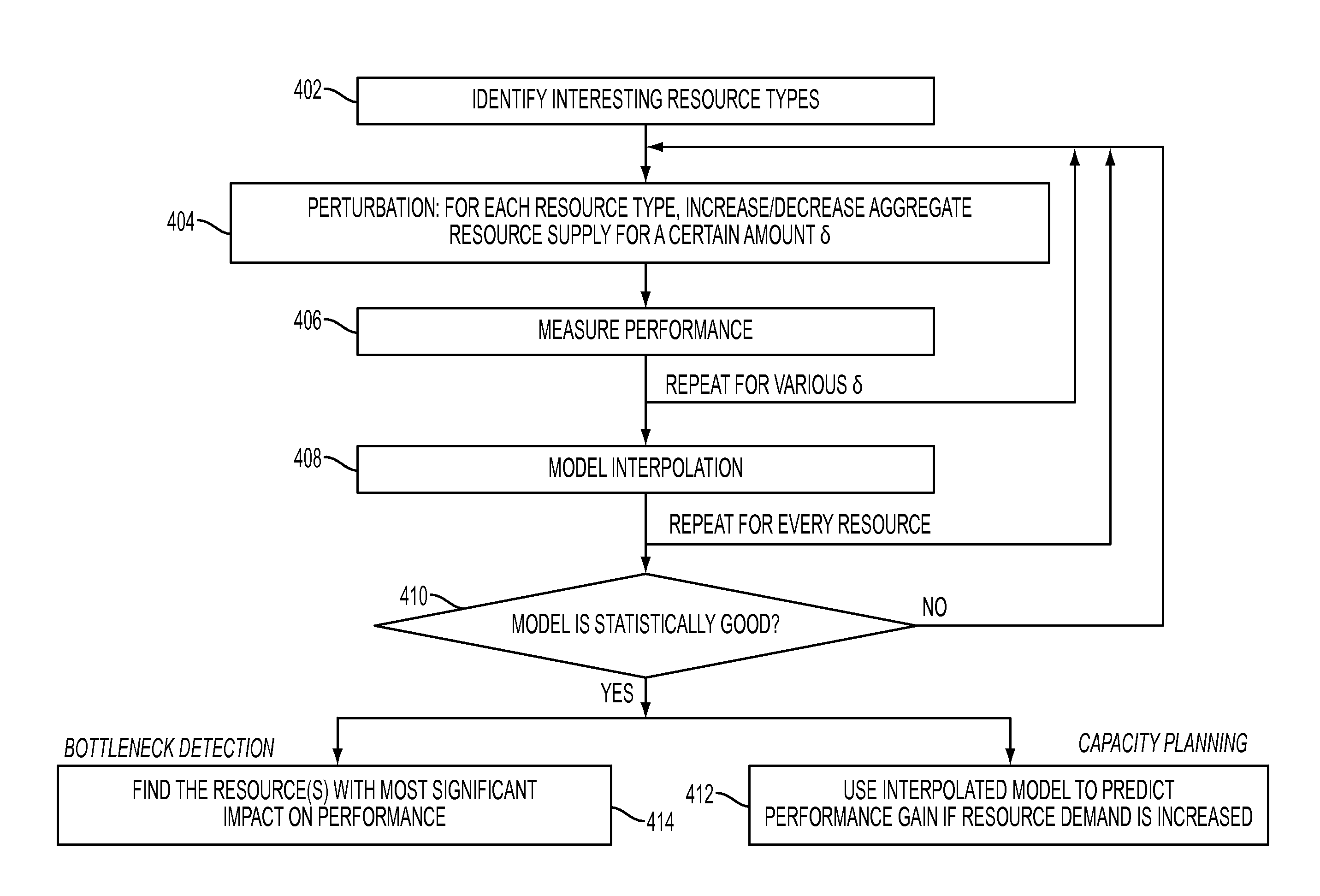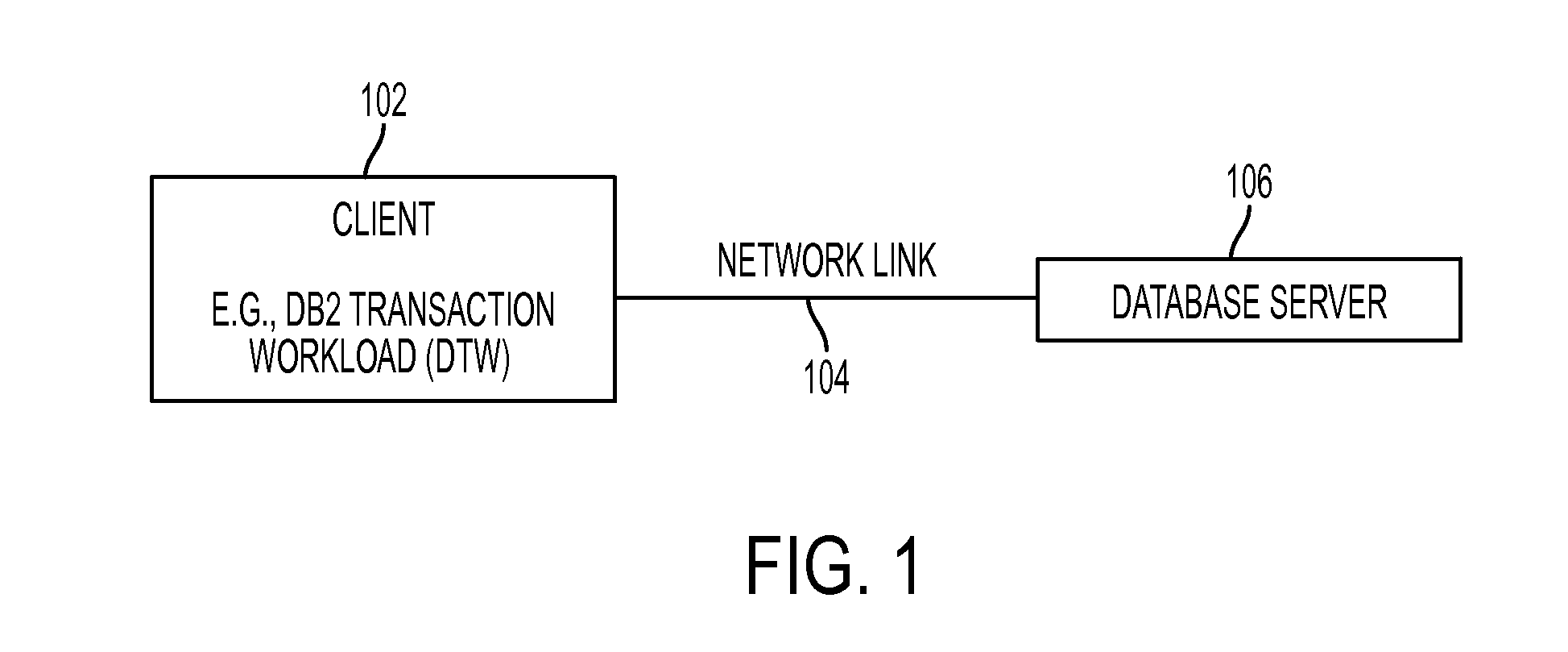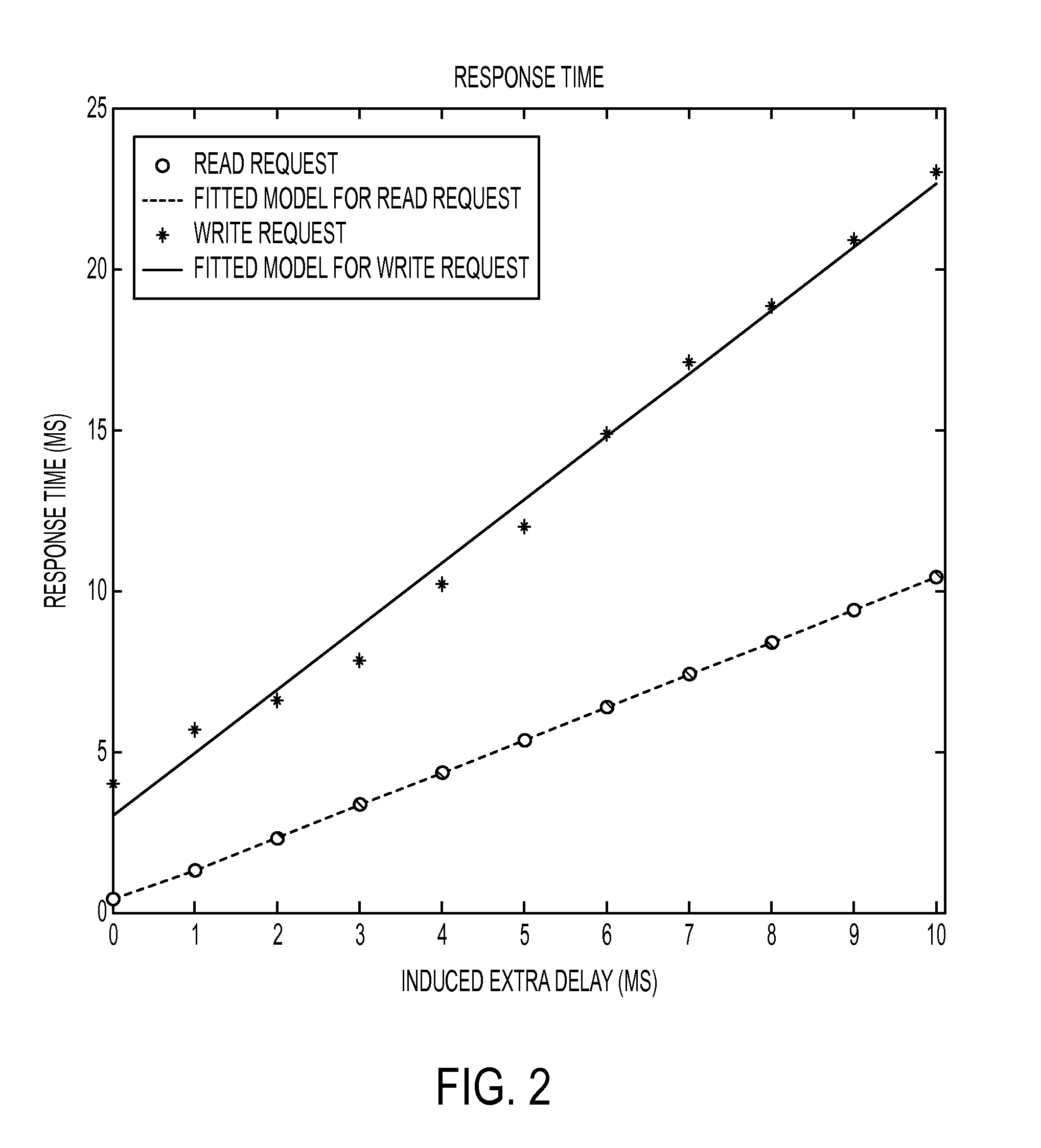Method to apply perturbation for resource bottleneck detection and capacity planning
a resource bottleneck and perturbation technology, applied in the field of computer applications, can solve the problems of difficult addition of instrumentation code to software source code, difficult design of intercept, and high software specificity
- Summary
- Abstract
- Description
- Claims
- Application Information
AI Technical Summary
Benefits of technology
Problems solved by technology
Method used
Image
Examples
Embodiment Construction
[0016]Detecting resource bottleneck and planning capacity are two closely relevant issues and can usually be solved simultaneously. Bottleneck detection refers to identifying the resource type(s) that restrains or prevents the system performance from improving, even with an increase of the other types of resources. The bottleneck resources could be a single type or a combination of multiple types. Capacity planning refers to determining how much performance gain should be expected, if an extra amount of bottleneck resources that combat bottleneck are added. For instance, a frequently occurring problem is how to detect which resource is the bottleneck that limits the software performance. Another relevant problem is, if one resource type is detected as the bottleneck and an extra amount of the resource is added to combat the detected bottleneck, determining how much performance gain can be expected. Such a two-stage problem in the present disclosure is called resource bottleneck dete...
PUM
 Login to View More
Login to View More Abstract
Description
Claims
Application Information
 Login to View More
Login to View More - R&D
- Intellectual Property
- Life Sciences
- Materials
- Tech Scout
- Unparalleled Data Quality
- Higher Quality Content
- 60% Fewer Hallucinations
Browse by: Latest US Patents, China's latest patents, Technical Efficacy Thesaurus, Application Domain, Technology Topic, Popular Technical Reports.
© 2025 PatSnap. All rights reserved.Legal|Privacy policy|Modern Slavery Act Transparency Statement|Sitemap|About US| Contact US: help@patsnap.com



